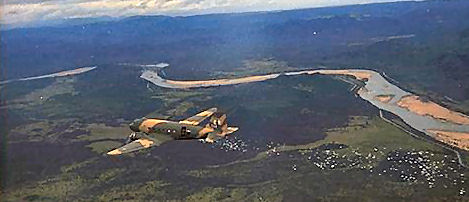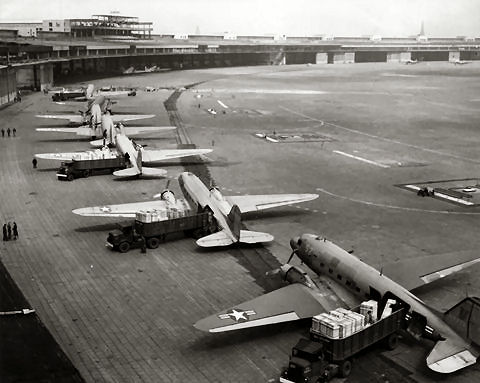|
|
||
|
||
|
Privacy Policy | Editorial Policy | Profit Policy | Join the Association | List of Members | Contact us | Index | Links |
||
|
Back Go to page: 1 2 3 4 5 6 7 8 9 10 11 12 13 14 15 16 17 18 19 20 Forward
|
||
|
|
||
|
Pedro’s Patter.
Excerpt from Jeff’s book – Wallaby Airlines.
Leading a Charmed Life.
It is hard to say which was the greater shock to the system—going to Butterworth, or coming back.
Dave Marland and I were sharing the flying on this trip, with Dick De Friskbom looking after the aircraft. Dave and I go way back. He was a year behind me at Point Cook, so we shared three years there. Even allowing for the fact that he is a ‘Pom’ and a year older we always got on quite well together.
Packing for the trip was a bit more complicated than going on a Nha Trang detachment, where we wore either flying suits or second-best casuals. We needed flying suits for the trip down and back, but would have to wear drabs (normal summer uniform) in the mess at Butterworth, and some smarter gear downtown. And of course we needed some real money, rather than the MPC ‘funny money’ we used in Vietnam.
Then we were told there would be a week’s delay. Maybe the whole thing would be cancelled. Our disappointment was overshadowed with the news that a 9 Squadron chopper had crashed and burnt. Peter Middleton, the copilot, was seriously hurt. I felt really sorry for him. It was the first loss of a 9 Squadron aircraft.
The chopper was supporting 5 RAR in an operation against VC base areas in western Phuoc Tuy Province. On board were the crew of four, two Army engineers as passengers and five boxes of explosives. After arriving at the 5 RAR position the pilot, Cliff Dohle, decided the area was too small to land safely so he commenced an overshoot. The aircraft subsequently crashed into the jungle and caught fire. The crewman, Sergeant Gordon Buttriss, at great personal risk, managed to get Middleton out of the wreckage. His efforts earned him a George Medal for gallantry.
Our week’s wait was filled in with a couple of Wallaby 406s and a 405 and the usual extracurricular activities, including an attempt to go shooting on a day off. I had not fired a shot in Vietnam so far, which seemed rather ridiculous. (Others would say fortuitous.) The range was in some rough country behind the back beach. Very rough, we found. After fording three flooded portions of road, we came upon another section too deep for the jeep. Good fun playing around with the four-wheel drive though. But no shooting.
The great day finally arrived. We felt a bit superior heading off on this jaunt while the poor sods who shared our jeep ride to the base prepared for an exciting day down the Delta. Our flight plan took us direct from the Vung Tau NDB, past Soc Trang, across the Camau peninsula and the Gulf of Thailand to a point abeam Alor Star on the north-east coast of the Malayan peninsula. From there we planned to track straight down across to Butterworth on the opposite coast.
It was strange overflying the Delta at an unaccustomed 8000 feet, without stopping at any of the usual military outposts. But we took it in our stride. This being an international flight we were not even talking to Paris and Paddy as usual, but to Saigon Control. At long last, somewhere over the gulf, we entered Malaysian airspace and were handed over to Kuala Lumpur Control. Dave (right) was waving at the window. ‘Goodbye Vietnam’, he said, or was it ‘Get stuffed!’
The Soc Trang TACAN dropped out at 235 nautical miles, the best performance I had seen, and an uneasy 20 minutes or so followed while our aircraft TACAN set searched for Alor Star on the coast of the Malayan peninsula. It finally locked on and we knew we were on plan.
After the frenetic activity of military bases in Vietnam, RAAF Base Butterworth was like ‘Sleepy Hollow’. Our arrival barely raised a ripple. We were the only aircraft in the circuit. Although this was our frontline fighter base, aircraft departed and arrived in dribs and drabs. The pilots here flew about twenty hours per month. I’d averaged one hundred in each of my first two months in Vietnam, and several times that number of sorties.
Our only duty was to carry out a compass swing on the aircraft; a procedure for checking the correct alignment of the various compass systems in the aircraft against an external compass. This would take two hours at the most. An extracurricular duty was, according to Dave, to sample the local cuisine, especially the Indian variety. Dave, having been born and spent part of his childhood in India, was a curry fiend. Our menu at Vung Tau was not big on curry, but there were heaps of curry houses on Penang Island, a short ferry ride from the base on the mainland. Also there was shopping to do. In these days of reel-to-reel tapes and ignorance of copyright, you could walk into any music shop in Penang and select the records you wanted taped. But my number one priority was a phone call to Robyn. We had five days in which to do it all.
After the compass swing the RAAF Air Movements staff drove us up to the Officers Mess where we had rooms booked. The mess was a tropical-colonial building set in manicured gardens of frangipani and bougainvillea. Tamil ladies kept the lush grass at a respectable length by swinging around their heads a blade on a leather thong. Their languid motion somehow matched the level of activity at the airfield. It was a bit hard to adjust our own pace. No one here seemed to be in a hurry to do anything. |
||
|
|
||
|
After dining in the mess, sitting at carved oak tables covered in starched white cloths laid with silverware under sighing punkah-louvres, waited on by soft-spoken Malays in traditional lap-laps, we were collected for drinks at the home of Bill and Carolyn Baggett. Bill was an ex-38 Squadron Richmond pilot, now based here to fly the search and rescue Dakota. A few other pilots and their wives also dropped in. Even though we knew everyone we felt like aliens in this genteel environment. Vietnam barely rated a mention.
The major problems discussed by the wives centred on finding a reliable amah to housekeep and mind their children so that they could play more bridge and tennis. Carolyn kindly asked how Robyn was coping, having endured time by herself in similar circumstances.
The knuckleheads (fighter pilots) seemed to suffer a guilt complex that they were not in Vietnam. They regaled us with stories of being on alert (whatever that was) in Ubon in Thailand. Next night we dined in our own company on Penang Island, satisfying Dave’s lust for curry. This was my first time in Penang. The pattern of the East was repeated in the small open-fronted shops, grubby monsoon drains and strange smells. Although the title ‘Pearl of the Orient’ was a little pretentious, Penang was much cleaner than Vietnam. It had a beautiful park and paved streets, and looked more prosperous. Even the monkeys in the park looked well fed.
After a few days sightseeing, shopping for tapes and a recorder to play them on and more curries, our temporary idyll was over. We reluctantly packed our bags and headed for the airfield and Vung Tau, the elusive scent of a semi-normal existence lingering in our nostrils. I wrote in my diary: ‘Heading back, one had the feeling of a leper who, having spent a day in half-communion with society, knows that he must return to his colony before dark.’ It was hard to settle down again, even after such a short time away.
Setting up my new tape recorder and playing one of my many pirated tapes diverted my attention from a routine that was already starting to drag. The recorder came with headphones so I could lie on my bed listening to music of my choice without disturbing anyone else in the room. Returning to Vietnam meant getting used to all the sights, sounds and smells again.
Back in August I sent home a postcard folder with the following message:
In the post card folder, the camera does lie. It could only be accurate if it conveyed smell.
I also remarked in a letter:
The tragic thing about Vietnam is that, except for the ‘dirty Delta’, basically it is a beautiful country. The soil is rich, the vegetation the greenest of green, the beaches beautiful and, in the north, mountains rivalling New Guinea in beauty if not in stature. From the air, it is hard to picture the fierce reality of hand-to-hand combat, though one often sees air-to-ground operations.
On the ground, of course, one comes face to face with the reality that altitude mercifully hides. Many of the towns have large sections of vermin-infested hovels, where garbage is simply thrown into the street. Vung Tau is no exception. Wandering round the shopping centre here is best left till dark when the heat of the sun is not present to assist the assault of decaying matter on the olfactory senses. [I think I meant, ‘it stinks’.]
John Harris goaded me into checking out the Vung Tau market (above). I thought I knew what decaying vegetables and rotten meat and fish smelt like until I went there. The smell of leftovers of various kinds, which had been thrown into a central drain running through the market, was unbelievable. It was rat heaven. The fruit and vegetables on the stalls looked appetising enough, if you could stay long enough not to throw up at the smell, but I cannot say the same for the dead chickens and carcasses of meat hanging on butcher’s hooks in the open, surrounded by clouds of flies.
I think John’s challenge followed remarks I had made the previous evening. A group of us had taken our drinks from the bar to an open-sided anteroom at the back of the Villa. We played mah-jong there since there was a large table available. In the middle of the game a rat the size of a chihuahua ran around a ledge halfway up the wall behind us. In the commotion which followed someone unsuccessfully pursued the rat while the rest of us got fresh drinks, taking care to put them on the table instead of the ledge. ‘I hope these filthy creatures aren’t in our kitchen’, I said to no one in particular. ‘If you want to see a health hazard, check out the local market’, said John. I wished I had not.
Most of us stayed pretty healthy, although one bloke had permanent dysentery. (More about that later.) My diary records I was crook for two to three days in late September. And I remember filling in for other pilots who felt the need to stay close to home.
Coming back again refocused our attention on the hazards of our operations. No one else had taken any ground fire while we were away. It was over a month since the last hit. If we needed proof the VC were still there, the activity going on all around the country confirmed it. I wrote home:
The large airports are like wasp nests, hundreds of transports flying war materials and provisions in and out by the hour, and a similar number of fighters and bombers leaving for and returning from air to ground attacks with bombs, rockets and napalm. Everywhere you fly you see the smoke of some air attack far below you (fortunately, the farther the better) and often it is hard to believe there are nasty little men running around on the ground below you. Often, when we land at dirt strips belonging to the Special Forces with our cargoes of rice, vegies, cattle, pigs, groceries, timber, barbed wire or whatever the VC are only 2–3 miles away ... So far I haven’t been hit. Naturally I’m not complaining.
|
||
|
|
||
|
Even the Yanks were getting hit. Were we luckier, or more careful, or were the VC packing up and going home? Of course, we knew our luck would eventually run out, even though we did things like always putting on our left flying boot before the right. In spite of their technical training, pilots are a superstitious bunch. All the short-time people (those getting ready to go home) remarked on how quiet it was. ‘You should have been here when there was a real war on’, they said. Of course, we said the same thing later when we were short-timers. But it was a bit strange.
I did not have too much time to think about it. Two days after returning from Butterworth I was off to Nha Trang again, this time with the CO, who let me do most of the flying. Most of our operations were out of Pleiku, resupplying Phu Tuc and camps to the north-west, Dak Pek, Dak Sieng and Plei Mrong. We had one sortie to Luong Son, an unfamiliar Type 1 field south-west of Nha Trang. There was a lot of action going on all around us. At briefing we were told that there were two VC divisions across the border from Dak Pak, and a VC anti-aircraft division across from Pleiku. Two choppers were shot down near Pleiku. The crews were rescued by another ‘Huey’. While we were unloading cargo at Phu Tuc, a US Army truck was blown up crossing a bridge half a mile away from the field. The unloading team was understandably nervous and wanted to get the job done without delay.
|
||
|
|
||
|
TMC were very keen for us to go down to Dak Seang (above), a new strip in the same valley as Dak Pek. On arrival, since we could see earth-moving machinery from the air, we overflew the strip. The briefing sheet, after warning about occasional sniper fire from the hills, had identified it as another Type 1 field. Like Gia Nghia, it straddled two hilltops, its uneven shape a red scar a thousand feet above the Poko River. It looked decidedly hairy and unfinished. Since I was flying I offered the opinion that we should take our load of sandbags and roofing iron back to Pleiku. The CO called up the camp on the Special Forces frequency. We were amazed to hear the reply: ‘Come on in Wallaby, you all are clear for a landing’, the voice on the radio assured us.
Dak Seang proved to be a terrible strip, the worst in the country, short, sloping and with dangerous approaches. It was only during the approach, too late to go around, that we saw that we would have to land in a graded furrow two feet deep and only slightly wider than the Wallaby’s wheel span. We had been conned into a landing while the strip was still under construction. Being the junior man, I stayed in the background while the CO gave the Special Forces captain who met us a dressing-down. He shrugged off our terse complaints with the comment that they needed our pallets of building materials to finish the camp. The CO emphatically refused to land again until construction work on the strip was completed, and informed TMC on our return to Pleiku.
Not to be outdone, TMC sent us straight back with POL drums, which had to be air dropped. This was even hairier than the earlier landing. Again the CO chose to let me fly. We had to fly a few feet above the strip, ready to roll the drums out where they were least likely to be damaged. Alex Martini, the crew chief, and his assistant, strapped to the side of the aircraft so they would not fall out the gaping cargo door, waited for our signal to operate the quick release buckles on the straps holding the drums. I flashed them a green light, and they began kicking the drums out one by one, watching them bounce on the soft earth below. I was more concerned with the changing centre of gravity as the drums went out, and the rising ground ahead of us. We lost only one drum, and managed to climb out well clear of 100-foot trees at the boundary of the strip.
|
||
|
|
||
|
We survived all of this and got back to Vung Tau unscathed. The VC left us alone. I still seemed to be living a charmed life. Back at Vung Tau I had more time to play with my new toy, the tape recorder I bought at Penang. I found John Harris had a similar machine that we could hook up to mine and record each other’s tapes, thus doubling our libraries. Next trip away I would buy a record player and some LPs, and so record my own tapes. The USAF PXs had quite a good selection of LPs.
After Ba To and the difficult logistic exercise of the repair operation, the Danang detachment had been abandoned. In its place, an aircraft was permanently allocated to resupply missions out of Vung Tau, which had greatly expanded its cargo handling capacity. The allocated aircraft had a new name, the 41 mission. It operated directly out of Vung Tau, usually around the Delta area. When flying the 41 or the courier our days were not quite so long giving us a bit more free time, enough to squeeze in a trip to the beach if a jeep was available. After-hours time was invariably spent in the bar. Drinks and cigarettes were so cheap most people drank far too much and smoked like chimneys. I even took up smoking for a while until I got tired of carrying packs of cigarettes everywhere. After flogging around the Delta in sticky monsoonal weather a long session in the bar at the end of the day was becoming a habit.
One Saturday night I was set for another such predictable night when Dick Brice said, ‘Let’s go to the Neptune for dinner’. I had never heard of it. It was a French-style restaurant around the corner from the front beach. The waiters were all dressed up in black with bow ties and the food was wonderful, especially after ham steaks and lima beans. The wine was of course outrageously expensive. After dinner we went into the bar next door. I am not sure what happened here. My diary merely says: ‘Hilarious’.
|
||
|
|
||
|
On the way back we walked along the boulevard, which ran along the front beach. In better times this attractive tree-lined street with its grand residences must have been the ‘Riviera of South-East Asia’. By day fishermen mended their nets on the paved walkways around the beach-side kiosks, while vendors sold food and soft drinks to passers-by. At this time of night the only people around were people like us, either walking back to their quarters or riding in rickshaws.
Further down the road was a palatial house reputedly owned by Air Vice-Marshal Ngyen Cao Ky, the Vice President. We did not visit the Air Vice-Marshal that night, however, turning up the side street to the Villa Anna. Next day, being Sunday, was unusual for two reasons. I had the full day off, and I also decided to try going to Mass again. I had only been once since arriving in Vietnam. Back home my wife and I were regular churchgoers. But some things I had seen and heard here made me very cynical about the Church. War and religion do not seem to mix too well. The church service I went to was conducted by an Army chaplain downtown at the Grand Hotel in the centre of town. The padre seemed to sense my feelings as he gave his down-to-earth sermon. It was good, but not enough to change my mind. I did not go to Mass again in Vietnam.
In this almost all-male military environment, full of red-blooded manhood, the talk was often of sex. Mostly it was just talk. Passing through Tan Son Nhut one afternoon, en route from the Delta to Vung Tau, we called in at TMC and ended up chatting over coffee to the lieutenant colonel in charge. He confided that he had only been here ten days and already had himself ‘set up’. He said: “She told me she was suntanned all over and I told her I didn’t believe it, and asked her to take her clothes off. Course you wouldn’t believe it if I told you she did.” When we offered no comment—what could you say—he continued: “Before I left home my wife said: “I know you’re going to have an oriental girlfriend while you’re away. I’m never going to mention it again and I don’t want you to.” Wow!’
He then showed us pictures of his charming wife and four kids, the oldest in academic robes, in front of an expensive-looking house. I think he got more satisfaction out of telling us about his extramarital adventure than the affair itself. It would be easy to be moralistic and condemn the man but we all fitted into one of two categories, frustrated loyal spouses/fiancées or free players. I just do not know why it was so important for him to tell his story to two complete strangers.
On a lighter note I later heard an amusing bar room story. A well-known character described in slurred tones how a young Vietnamese lady guided him by the hand from a local bar to her father’s house. The father was standing at the gate, evidently to protect his daughter, armed with a chain encased in plastic.
The daughter took our friend to a back room where he revealed that his total wealth amounted to $3.40 in MPC. This was sufficient only for her to strip to the waist after which he retired, presumably in as graceful a manner as his condition would allow, past the sentinel at the gate. On the way back to the Villa he broke up an argument between two Diggers and a rickshaw driver by threatening to punch the latter in the head. After this he sought the solace of our friendly bar to recount his amazing adventures in far more colourful language than mine.
The end of the month brought a letter and a Melbourne newspaper from my mother. She thought I might be interested in all the ballyhoo surrounding the visit to Australia of President Lyndon Johnson. If only she could have heard what some of the American GIs in Vietnam were saying about him. Whatever was going on down there it did not have much effect on the routine here.
|
||
|
|
||
|
|
||
|
C-141 Tail Number: 64-0614.
On the 31st October, 1977, a USAF C141, registration number 64-0614, was involved in a double engine failure and barely managed to return for a safe landing at RAAF Base Richmond.
On that day, Kev Cragg was a 22 year old LAC Radtech G playing cards in the Tower Radio room. (At smoko of course!!) He said he noticed the “MAC bird” lumbering down the runway then it was airborne when he saw it out the other side of the tower but then it had a bright orange glow on the starboard wing. The aircraft took a dip and began a slow turn at what seemed to be treetop level, trailing smoke and it was obvious the pilot wanted to get back on the strip. Kev says it seemed to take an eternity for the 141 to make its way back but it managed to line up and touched down still trailing smoke from the fire inside the cargo area. The Fireys were right on to it and we watched the crew escape the aircraft and scatter. One of the Herc squadrons had the 141 half way sticking out of a hangar for months while it was repaired and finally left Richmond.
|
||
|
|
||
|
Passing through 700ft during a heavyweight take-off from Richmond enroute to Pago Pago, the number 3 engine experienced an uncontained engine failure. Parts of number 3 engine penetrated number 4 engine, instantly causing it also to fail. Parts also penetrated the cargo compartment starting a cargo fire within a pallet of household goods. The aircraft commander, in the right seat, took control of the aircraft as the aircraft started losing airspeed and altitude.
Initially planning to crash land, the aircraft turned toward a nearby riverbed. With the two good engine throttles fire walled the aircraft continued to descend. Number 3 engine was dangling from the pylon and on fire while number 4 engine was peppered with holes. The wing was leaking fuel.
The aircraft continued to descend into the riverbed. In a final effort to keep flying, while still expecting a crash landing, the pilot elected to slowly retract the flaps. As the flaps retracted the airspeed stabilized and then increased. The aircraft stopped descending well below airfield elevation, just above the riverbed. As they started a climb, the crew had lost sight of the air base. They requested directions back to the airfield from tower, but were out of sight of the tower. A RAAF C-130 in the traffic pattern gave them vectors to the runway.
In the cargo compartment, the load masters grabbed walk-around oxygen bottles and fire extinguishers. They fired the fire extinguishers into the pallet, while other crew members formed a fire brigade refilling oxygen bottles. Smoke filled the cargo compartment, reducing visibility to less than four feet. Smoke was also filling the cockpit. The pilot attempted to open the ram air door, but it was stuck. He was about to open the pilot's window when the navigator reached up and opened the sextant port. This effectively and quickly cleared the cockpit of smoke.
With the remaining two good engines operating at full power, the pilots maintained control of the aircraft and set up for a visual straight-in approach. The aircraft landed trailing engine parts and fuel. The crew and passengers evacuated successfully. The Richmond Fireys extinguished the fire.
Until this accident, the technique of "milking up" the flaps on a multiple engine failure had never been taught and was not an officially recognized procedure. The crew members each received the Air Medal.
Below are some pics of the engine nacelles.
|
||
|
|
||
|
|
||
|
|
||
|
|
||
|
|
||
|
|
||
|
|
||
|
The Mighty DC-3.
Eight decades after its first flight, the DC-3 remains an aviation legend.
On a spring morning in 1966, North Central Airlines flight 787 departed Omaha, Nebraska, en route to Grand Forks, North Dakota, with seven stops along the way. On its first leg to Norfolk, Nebraska, the airplane cruised at a leisurely 155 mph. Everything was routine until a sudden backfire startled the captain. Black smoke and flames poured from the left engine nacelle. As the captain rushed to shut down the engine and feather the propeller, the crew actuated the single-shot engine fire extinguisher. Still, the fire burned. Fifteen miles short of Norfolk airport, the crew faced a tough decision—try to make it to the runway or land in a farmer's field with 26 passengers and three crew on board.
The captain decided to put the plane down in the alfalfa patch. As he
began his descent to reduce the chances of cartwheeling during the
single-engine landing, the captain kept the landing gear up. When fully
retracted, the DC-3's wheels still protrude from the underneath the
airplane, providing
Crew and passengers clambered out unharmed to the sound of an approaching John Deere tractor and wagon. A farmer had seen the DC-3 straining to land from his kitchen. He invited the passengers back to his farmhouse for coffee and cookies. The crew secured the airplane and assessed the damage. Aside from needing new engines and props, the DC-3 was largely unharmed. Transport to Norfolk airport was quickly arranged and, amazingly, all the passengers chose to resume the flight on another North Central DC-3. Several days later, the farmer cut a swath through his field and another crew jumped in the airplane, flying the airliner out of the alfalfa to the nearby airport, and a couple weeks later, it was back in service.
There are thousands of stories about the DC-3. From "Gooney Bird" and "Dumbo" to "Spooky" and "Puff The Magic Dragon," at least two dozen nicknames testify to its versatility and ruggedness. More than 16,000 DC-3s and military version C-47s were built in 50-plus variants. More than 300 are still flying today.
The DC-3 was born into an emerging commercial air travel industry and traveling by air was much riskier and arduous before the DC-3 came along. The first airline flight in America was a 23-minute jaunt across Tampa Bay, Florida, in 1914, on which a single passenger joined the pilot in a noisy, windy open-cockpit Benoist flying boat. By the 1920s, the Ford Trimotor reliably carried 13 passengers coast to coast in the US, but its limited range (570 mi), slow cruising speed (100 mph), and modest instruments meant that the trip took 48 hours (though not all of it was aboard the Trimotor). In comparison to these early flights, the DC-3 was a quantum leap forward.
The Douglas Aircraft Company built the "Douglas Commercial 3" (DC-3) based on the 1933/34 Douglas Commercial 1 and the Douglas Commercial 2. Around that time, American Airlines CEO, C. R. Smith, persuaded Donald Douglas to design a sleeper aircraft based on the DC-2 for long-distance flights. With a cabin two feet wider than the DC-2, it accommodated 14 to 16 sleeper berths or 21 passenger seats.
The new airliner first flew on December 17, 1935 and its expanded dimensions perfectly balanced load and revenue. Transcontinental trips from L.A. to New York could be made in about 15 hours, or 17 hours in the other direction. As Flying Magazine puts it, the DC-3 married reliability with performance and comfort as no other airplane before, revolutionizing air travel and finally making airlines profitable. Airlines like TWA, Delta, American, and United ordered entire fleets of DC-3s, finally establishing the airplane as the go-to method for long-distance travel.
Then came the war.
The onset of WWII saw the last civilian DC-3s built in early 1943. Most were pressed into military service and the C-47 (or Navy R4D) began rolling out of the company's Long Beach plant in huge numbers. It differed from the DC-3 in many ways, including the addition of a cargo door and strengthened floor, a shortened tail cone for glider-towing shackles and a hoist attachment. In 1944, the Army Air Corps converted a DC-3 into a glider (XCG-17) and it significantly outperformed the gliders towed by C-47s on D-Day. C-47s served in every theatre. Large numbers of C-47s were freed for use after the war, but airlines swiftly adopted larger, faster DC-4s and DC-6s for main routes. Smaller regional airlines eagerly snapped up the DC-3s sold off by major airlines, while surplus C-47s became an armada of cargo freighters, building the airplane's reputation for being able to carry just about anything you could fit through the door. Douglas made a longer, more powerful, and faster DC-3S or "Super DC-3" in the late 1940s, meeting with little airline sales success though taken up by the Navy and Marines as the R4D-8/ C-117D.
The Super DC-3 had a stretched fuselage, adding 39 inches to the nose
section and 40 inches to the rear cabin. This added six feet and seven
inches of usable space. It also had increased vertical and horizontal
stabilizer surfaces in span and area and the power plants were replaced
with the same engines used in the DC-4 (R2000). Shorter, jet
ejection-type exhaust stacks increased the usable horsepower and the
engine nacelles were
The interior of a fully restored C-47, one of the planes used to drop paratroopers on D-Day.
But really the basic DC-3/C-47 configuration was so good it needed little improvement. Its two Pratt & Whitney R-1830 Twin Wasp 14-cylinder radial engines produced 1200 hp each, providing thrust enough to lift 20-plus passengers and baggage or a 2,750 kg cargo load. Cruising at 260 to 290 kph, the DC-3 has a range of about 2,575 kilometres, land in less than 1,000 km and take off again in less than 300 km. Its low-speed handling and toughness made it the go-to airplane for a myriad of jobs including military special operations.
That included going back to war. In response to increased attacks by Viet Cong on rural South Vietnamese outposts in Vietnam in 1963, American Air Commandos began assisting the defence of small villages at night by using their C-47 transport aircraft to fly in circles and drop illumination flares, exposing attackers to the defending troops. The practice inspired the idea of fitting the C-47s with firepower and ultimately an Air Force effort called Project Gunship I.
The Air Force modified several C-47s by mounting three 7.62 mm General Electric miniguns to fire through two rear window openings and the side cargo door, all on the left side of the aircraft. A gunsight was mounted in the left cockpit window. Orbiting a target at 3,000 feet and 140 mph, the modified "AC-47" could put a bullet into every square yard of a football field-sized target in three seconds.
Another C-47, used as a leaflet-dropping, loudspeaker-equipped psychological warfare aircraft in Vietnam was unofficially called the "Bullshit Bomber." Information learned in Vietnam with the DC-3 lead to the development of the AC-130 Hercules.
By the early 1960s, turboprop airliners like the Convair 580 surpassed the DC-3s efficiency as a regional airliner. They could operate from the same short runways as the DC-3 with similar fuel consumption but at greater range, speed, and the added comfort of a pressurized cabin. Despite vanishing from all but a few airline fleets, DC-3s were still ubiquitous in the 1970s and 80s, often seen on airport ramps alongside 747s and DC-10s working as cargo aircraft and freight forwarders. They fought forest fires as air tankers, brought odd-size cargo to metropolitan markets, and were the aircraft of choice for drug cartels. However, one of the C-47s most famous cargo jobs was supplying the city of Berlin with food during the Berlin Airlift, along with other aircraft like the C-54 Skymaster and the C-74 Globemaster.
The DC-3 remained on military duty until 2008, 72 years, until the Air Force's 6th Special Operations Squadron finally retired its turbine-powered Gooney. Other DC-3s continue to fly missions as sensor development testbeds for the military and as freighters with companies like Canada's Buffalo Airways.
Nearly 100 countries have operated DC-3s and long-forgotten airplanes still surface including a wrecked C-47 recently discovered in northern Siberia. In addition to airliners and freighters, DC-3/C-47s have flown as VIP and executive transports, electronic intelligence gatherers, float planes, air ambulances, Antarctic research aircraft, and gunships to name a few. Perhaps the best way to refer to a DC-3 is simply to call it a legend. People still scramble for a flight in one at airshows and in remote areas, the arrival of a Gooney means help and support. It's simple, rugged, and surprisingly relevant to this day.
|
||
|
Sleeping is the healthiest thing you can do without doing anything |
||
|
|
||
|
|
||
|
Back Go to page: 1 2 3 4 5 6 7 8 9 10 11 12 13 14 15 16 17 18 19 20 Forward |
||
|
|

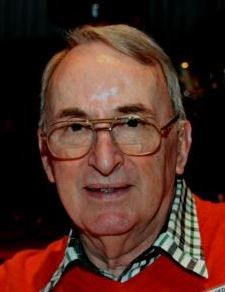
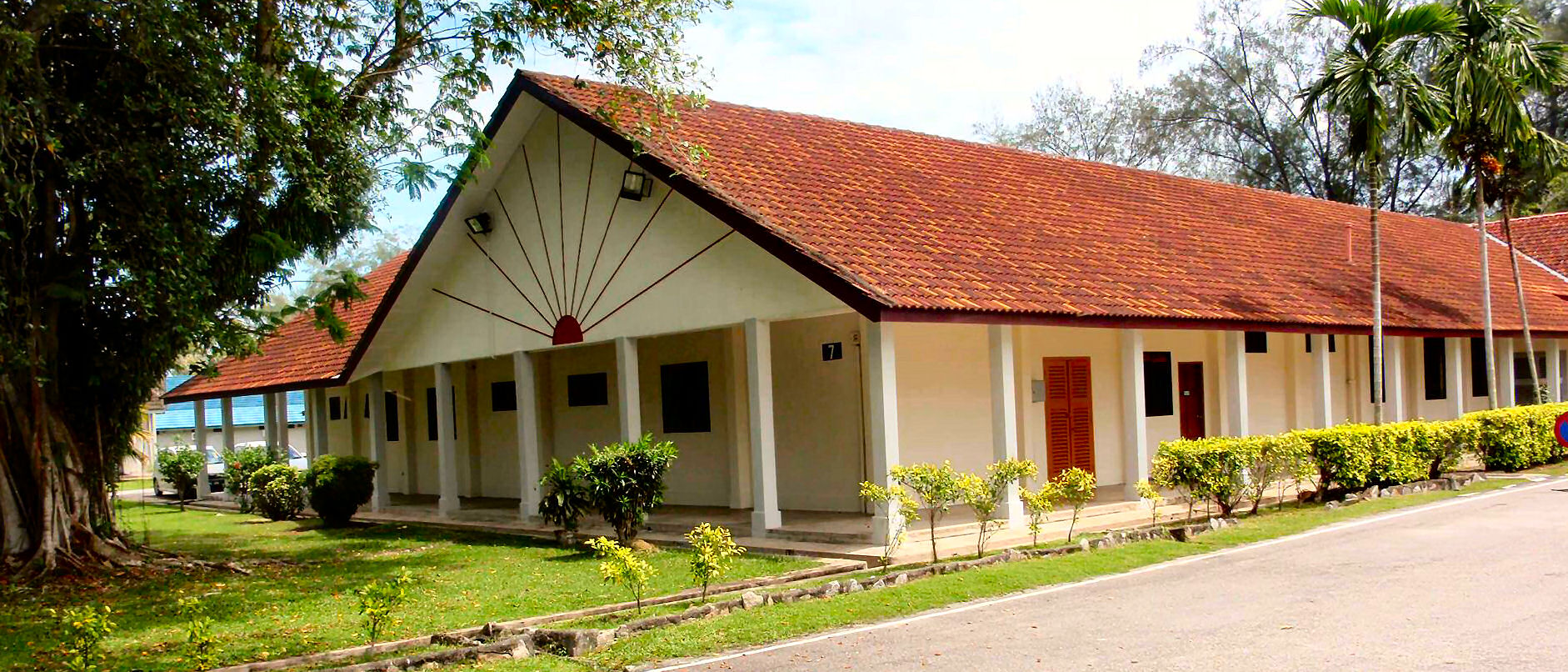
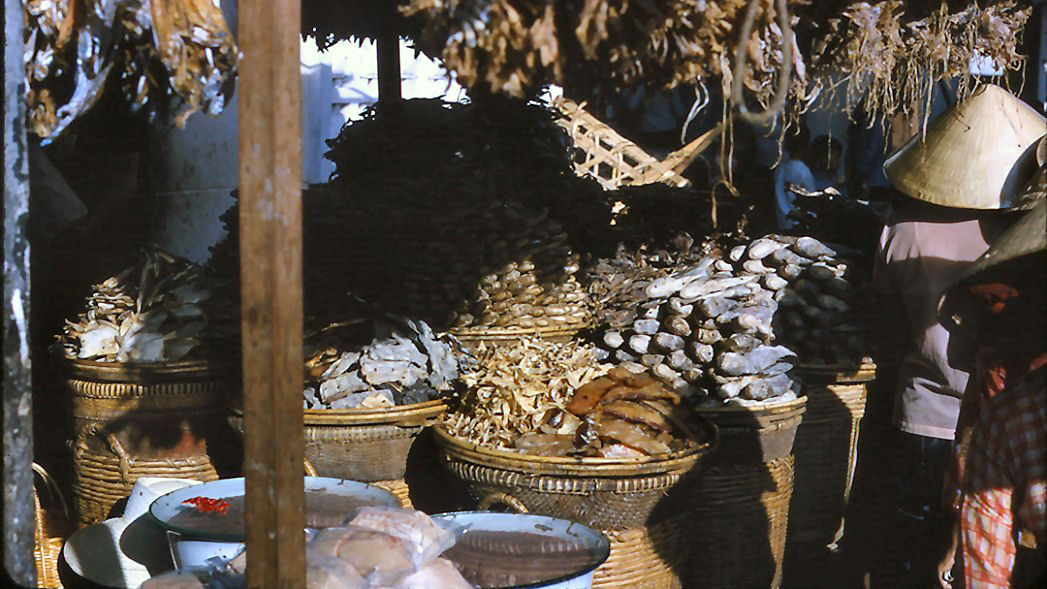

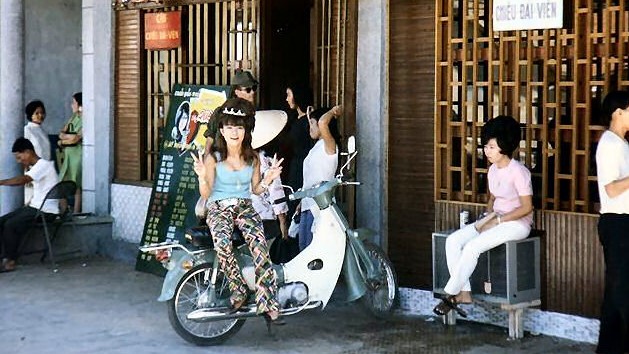
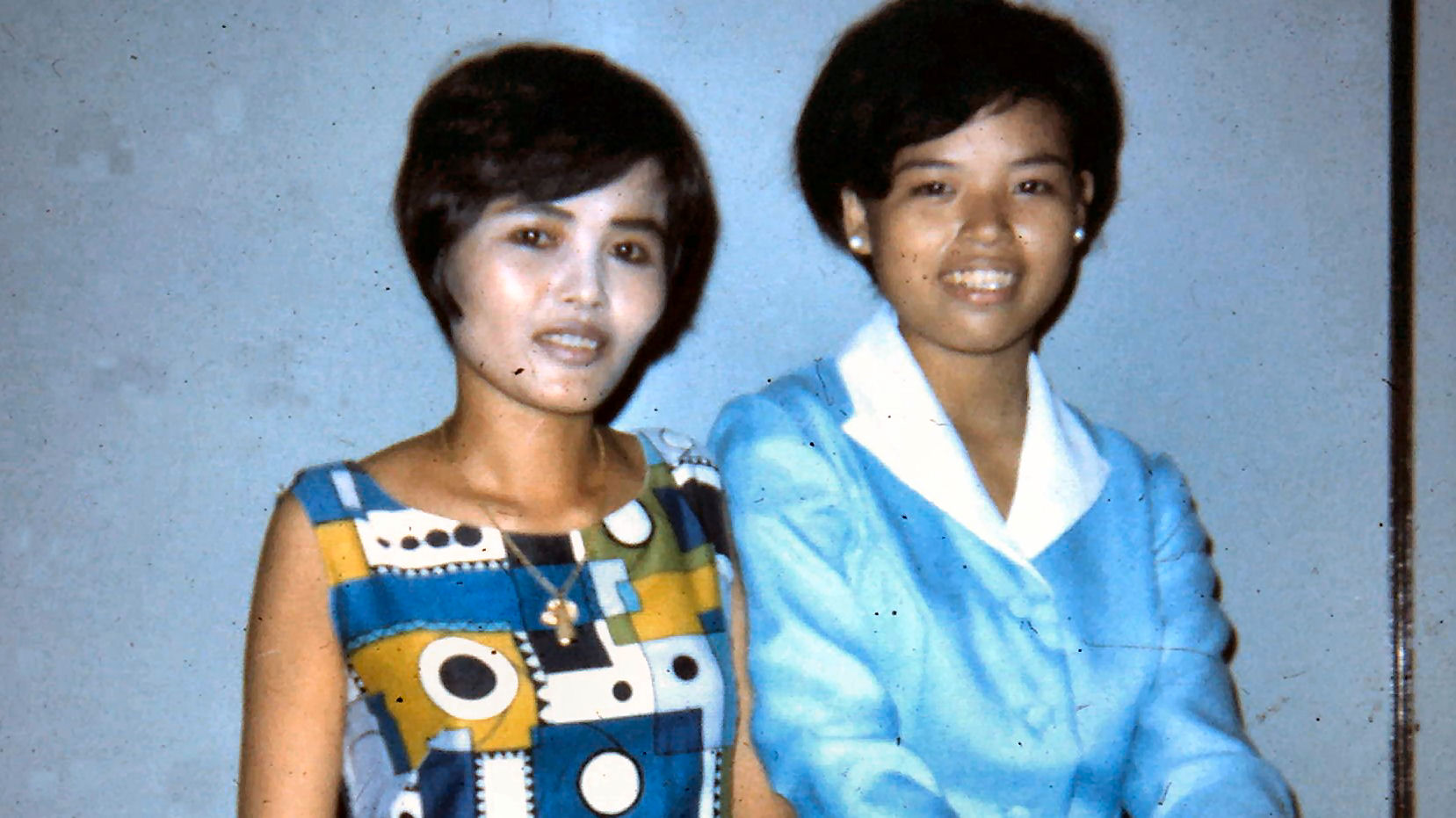

 a mild buffer in an emergency landing. Just before the field, he closed
the throttle on the remaining engine. Brushing then ploughing through
the green alfalfa crop, the DC-3 was cushioned by the thick vegetation.
As it settled, both propellers dug into the soil, the tailwheel making
slight contact as the airplane slid to a swift, straight stop.
a mild buffer in an emergency landing. Just before the field, he closed
the throttle on the remaining engine. Brushing then ploughing through
the green alfalfa crop, the DC-3 was cushioned by the thick vegetation.
As it settled, both propellers dug into the soil, the tailwheel making
slight contact as the airplane slid to a swift, straight stop. 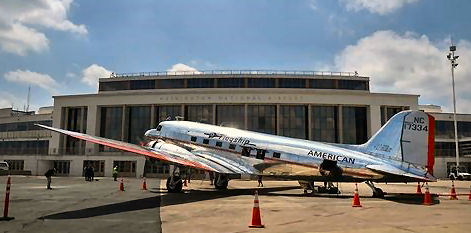
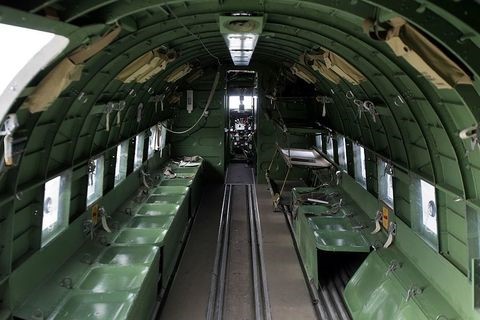 enlarged allowed the addition of wheel well doors. It also had a
partially retractable tail wheel. The outer wing panels were swept back
four degrees at the trailing edge to accommodate the rearward shift in
the centre of gravity and flush rivets and low drag antennas decreased
the drag. These changes allowed the increase of seating capacity to 38
though it never took off.
enlarged allowed the addition of wheel well doors. It also had a
partially retractable tail wheel. The outer wing panels were swept back
four degrees at the trailing edge to accommodate the rearward shift in
the centre of gravity and flush rivets and low drag antennas decreased
the drag. These changes allowed the increase of seating capacity to 38
though it never took off.